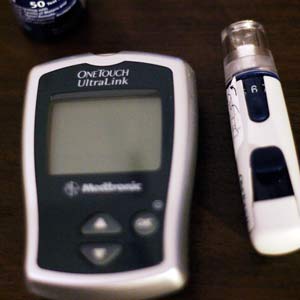Diabetes mellitus, meaning “honeyed urine,” has been written about for the last 2,000 years, first emerging in Greece in the first century A.D. According to DiabetesHealth, in Areteaus’ writings, he describes the destructive nature of diabetes. Around the world, other cultures had given this horrific disease similar descriptive names because fluids would not stay in the body, smelling and tasting like sugar.
According to American Diabetes Association research conducted in 2007, there are 23.6 million people who have one thing in common—diabetes. That’s about eight percent of the population. Ten percent of the Latino population has diabetes. Of that, 12 percent of those Latinos are Puerto Rican.
More and more people are being diagnosed every day, and even still, about five million people go undiagnosed until something terrible happens.
Many don’t know, nor understand, what diabetes is and what it can do to your body. In this series, Gozamos plans on taking you through an eye-opening journey explaining what diabetes is, what causes it and how to prevent and control the epidemic.
In order to control or prevent the disease, it is highly important to understand what diabetes is, hence understanding how the human body works normally.
In everyone’s body, each organ performs a specific function. Important in this discussion is the pancreas, which creates a hormone called insulin, vital in helping our bodies’ cells use sugar and covert it into energy.
There are two types of diabetes: Type 1, typically known as juvenile or insulin-dependent diabetes, and Type 2, also known as insulin-resistant diabetes.
Type 1 diabetes, although typically diagnosed in children and teens, is not uncommon in young twentysomething-year-old adults. In this type of diabetes, considered an auto-immune disease, the pancreas produces too little or no insulin at all, as a result of the immune system attacking the pancreatic beta cells, or insulin-producing cells. Because of this, the body cannot use sugar appropriately, causing the body to release the sugar through urine. There is no way to prevent Type 1 diabetes and the cause of the trigger that sets off the disease is unknown.

In Type 2 diabetes, the body still produces insulin, but cells become resistant to insulin, thus preventing the cells from using sugar. This leads to the same outcomes as in Type 1. Type 2 can be prevented by eating a healthy diet, limiting sugar intake and keeping weight at a normal level. This is why obesity and Type 2 diabetes go hand-in-hand.
Since sugar stays in the system and does not get used by the cells because of diabetes, it ends up running through organs and the blood stream, damaging everything in its way, unless it is carefully monitored. Those who do not care for themselves through insulin injection or oral medication can develop blindness, kidney failure, neuropathy, cardiovascular problems, erectile dysfunction and even death.
Living with diabetes is not impossible. Most of the time, diabetics can be and are healthier than non-diabetics. It has to do a lot with understanding sugar intake and sugar in the blood stream. Most diabetics receive glucose meters to check blood sugar readings at home. It takes five seconds with a small sample of blood from the fingers. Readings should be kept between 70 and 120, and proper precautions should be taken in order to keep this under control, which includes oral medications or insulin, proper diet and exercise.
It’s time to stop suffering and time to take control over this disease that’s hindering millions of people, particularly in the Latino community. If you are diabetic or know someone who is, take the steps now to educate yourself and support those who need it.
Helpful Links:
American Diabetes Association
Diabetes Health
National Institute of Diabetes and Digestive and Kidney Diseases